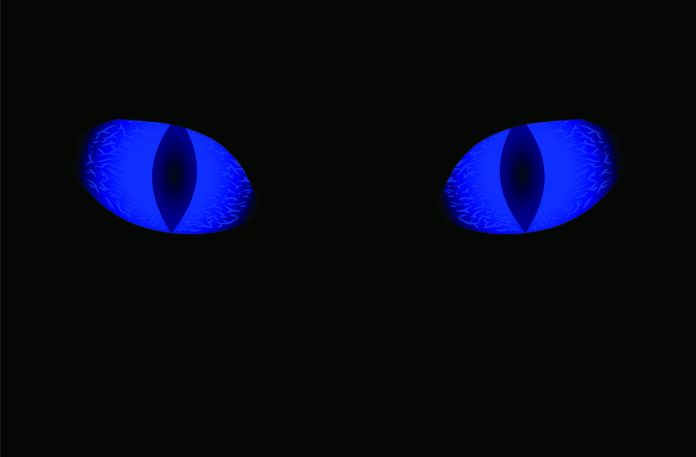Cats can see better than we can in the dim light of dawn and dusk, but the anatomy of their eyes puts them at a color deficit. Like a colorblind person, they are not good at distinguishing red from green because their eyes don’t have the number or types of cones to differentiate those hues. Indeed, people have 10 times as many cones as our feline companions. Thus, put a bright red ball on a green lawn, and a cat might miss it (unless it’s big enough for its shape to stand out). A cat’s world, at least from our perspective, is largely a limited palette of blues and yellows — and grays.
However, some provocative, albeit preliminary, research suggests that cats might naturally be able to see colors at the ultraviolet light end of the spectrum — the kind of deep, neon-like colors we usually can’t see unless they’re under a black light. To understand why that ability would benefit a cat, think of a white fox in the snow. For us the fox would fade away — we might not even see it. But because the hair on the fox and the snow reflect ultraviolet light differently, the fox might stand out very vividly to a cat. (Cats, incidentally, can see the fox moving better than we can. Although we have more cones in our eyes to distinguish different colors, they have many more rods, which help detect motion.)
Not nailed down yet
To be sure, the research to this point does not prove that cats can see in the ultraviolet portion of the spectrum, despite a flurry of media reports a while back that made it sound like a fact. Tufts veterinary ophthalmologist Stephanie Pumphrey, DVM, points out that it has been shown only that the feline eye lens does not filter out the ultraviolet light that would allow a cat to see in the ultraviolet range. It’s possible, she says, that such light gets filtered in a cat’s cornea or some other tissue of the eye instead. And even if it doesn’t, it still remains to be determined whether structures in a cat’s eye called photopigments can actually absorb light in the ultraviolet spectrum. That, too, would be needed for cats to be able to see in the ultraviolet range. Only future studies will tell.
If it does turn out that cats can see in the ultraviolet range, that might be what some of their staring without blinking is about. It could be they are taking in things that have literally escaped our notice. After all, many things in nature have ultraviolet coloration — not just animals but also different varieties of plants.
Scientists knew a long time ago that non-mammalian animals such as birds, fish, and insects could perceive a wider range of light — and therefore colors — than people. It would be a huge discovery if it were found that cats can naturally make use of ultraviolet light.




